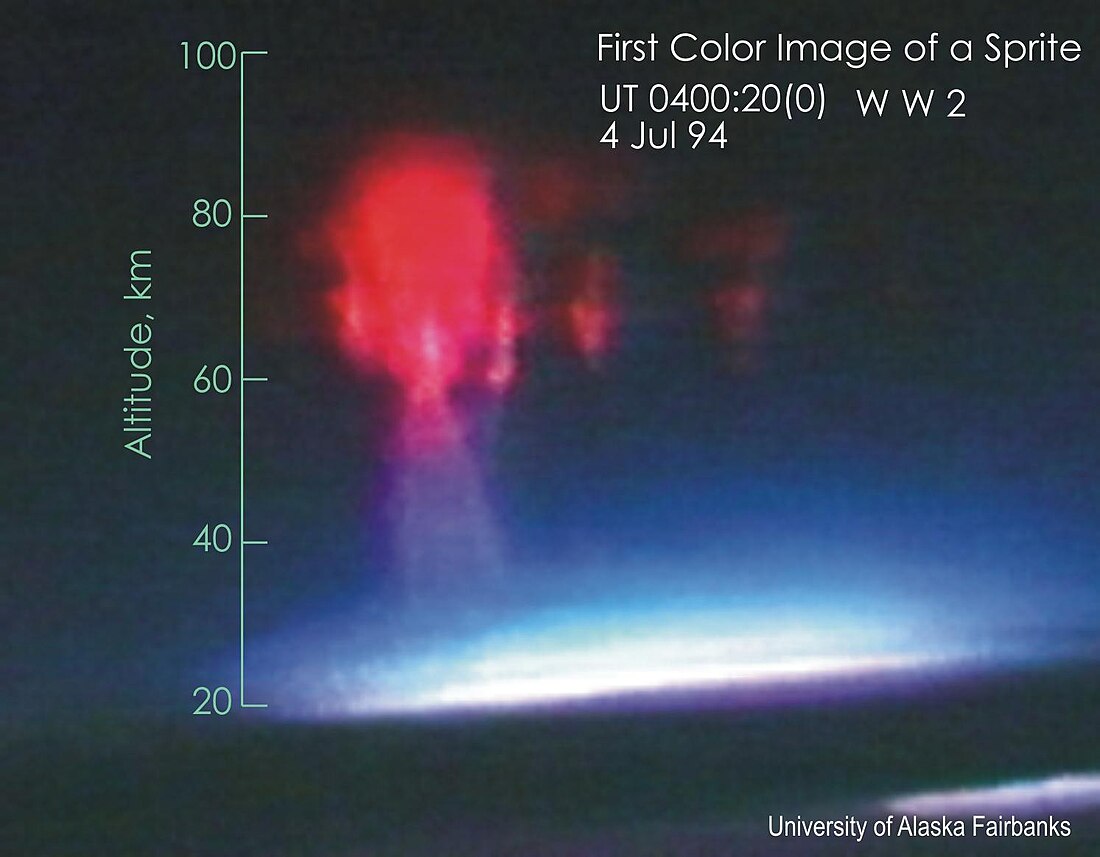Top Qs
Timeline
Chat
Perspective
John R. Winckler
From Wikipedia, the free encyclopedia
Remove ads
John Randolph Winckler (October 27, 1916 – February 6, 2001) was an American experimental physicist notable for his discovery of sprites in 1989[1] [2] [3] [4] [5] and other discoveries in the fields of solar, magnetospheric, auroral, and atmospheric physics.

[6] [7] [8] [9] [10] [11] [12] [13] [14] [15] [16] [17][excessive citations] He was also notable for designing new methods and apparatus to collect scientific data from high altitude flying objects such as balloons, rockets, and spacecraft.[6] This data collection led Winckler and his staff to major discoveries, such as: discovering that high-energy electrons accompany auroras.[6] Winckler was an advisor to NASA,[14] and a member of the National Academy of Sciences.[6]
Remove ads
Notable awards and distinctions
- 1953 Fellow of the American Physical Society[18]
- 1962 American Institute for Aviation and Astronautics, Space Science Award[6]
- 1965-66 Guggenheim fellow, France[6]
- 1972 Doctor honoris causa, Universite Paul Sabatier, Toulouse, France[6]
- 1978 Arctowski Medal, National Academy of Sciences[6]
- 1985 Soviet Geophysical Committee International Geophysical Year Commemorative Medal[6]
- 1991 NASA Medal for Exceptional Scientific Achievement[6]
- 1996 Member, the National Academy of Sciences[6][7]
Remove ads
Chronology
- October 27, 1916, born, North Plainfield, New Jersey
- 1942: B.S., Rutgers University
- 1946: Ph.D., Princeton University[6][8]
- 1946: joins faculty of Princeton University[6]
- 1949–1986: University of Minnesota, assistant professor to professor of physics[7]
- 1986–2001: University of Minnesota, emeritus professor of physics[7]
References
Wikiwand - on
Seamless Wikipedia browsing. On steroids.
Remove ads
